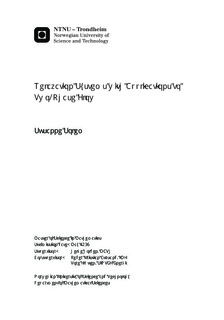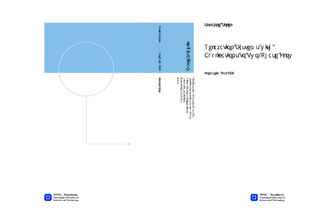| dc.contributor.advisor | Holden, Helge | nb_NO |
| dc.contributor.advisor | Aursand, Peder Kristian | nb_NO |
| dc.contributor.advisor | Flåtten, Tore | nb_NO |
| dc.contributor.author | Solem, Susanne | nb_NO |
| dc.date.accessioned | 2014-12-19T14:00:29Z | |
| dc.date.available | 2014-12-19T14:00:29Z | |
| dc.date.created | 2014-06-28 | nb_NO |
| dc.date.issued | 2014 | nb_NO |
| dc.identifier | 730607 | nb_NO |
| dc.identifier | ntnudaim:8938 | nb_NO |
| dc.identifier.uri | http://hdl.handle.net/11250/259314 | |
| dc.description.abstract | Relaxation systems are widely studied and much used to describe nonequilibrium phenomena, occurring in, for example, two-phase flow. In this thesis we will therefore consider relaxation systems in one space dimension and get some insight into their applications to two-phase flow. Two main topics will be considered: hyperbolic constant-coefficient relaxation systems and a specific two-phase model. Entropy conditions are also studied. All three topics are connected with relaxation processes.The first part consists of a study of the transitional wave-dynamics of strictly hyperbolic constant-coefficient relaxation systems with stable rank one relaxation matrices. By realizing that the eigenvalue polynomial of such a system can be written as a convex sum of the two eigenvalue polynomials of the corresponding formal limiting systems, we show that the system is stable if and only if it fulfills the interlacing property known as the subcharacteristic condition. Further, if the system is stable, it is shown that the transitional wave-velocities can never exceed the velocities of the corresponding homogeneous system. The results are applied to a two-phase model. Mathematical entropy is studied in connection with conservative and nonconservative relaxation systems. Beneficial properties, such as symmetry and the fulfillment of the subcharacteristic condition, follow directly from the existence of a convex entropy for conservative systems. This does not hold in general for nonconservative systems. A two-phase model with a well-reservoir interaction term and a viscous term is studied. The estimates that exist for the full model are relaxation parameter dependent. An existence result for the reduced model, the formal limit model as the relaxation time tends to $0$, does therefore not follow directly from the existence result for the full model. A new existence result for the reduced model is therefore achieved in a similar way to that of the full model. It relies on the assumption that specific parameters and initial conditions are small enough. The result also ensures that both phases will exist at any spatial point for any finite time. | nb_NO |
| dc.language | eng | nb_NO |
| dc.publisher | Institutt for matematiske fag | nb_NO |
| dc.title | Relaxation Systems with Applications to Two-Phase Flow | nb_NO |
| dc.type | Master thesis | nb_NO |
| dc.source.pagenumber | 155 | nb_NO |
| dc.contributor.department | Norges teknisk-naturvitenskapelige universitet, Fakultet for informasjonsteknologi, matematikk og elektroteknikk, Institutt for matematiske fag | nb_NO |

